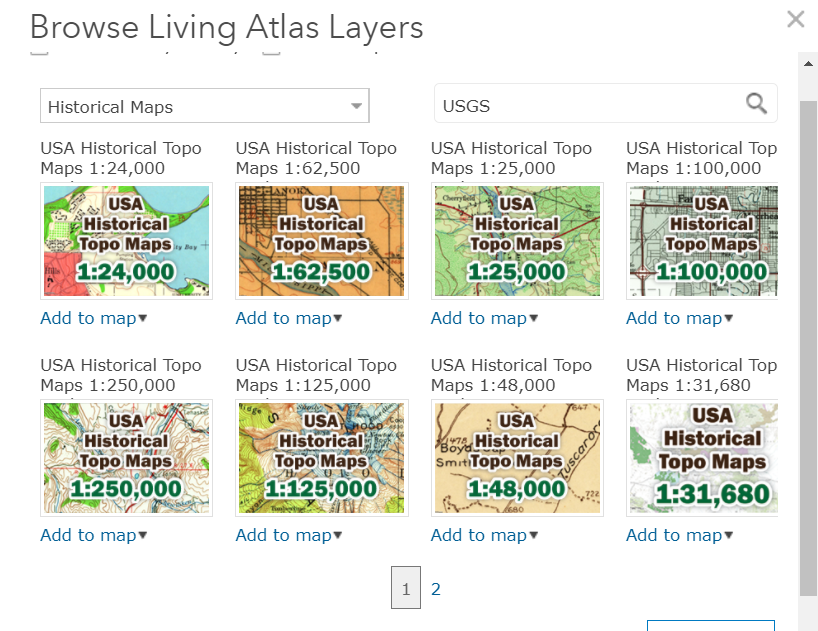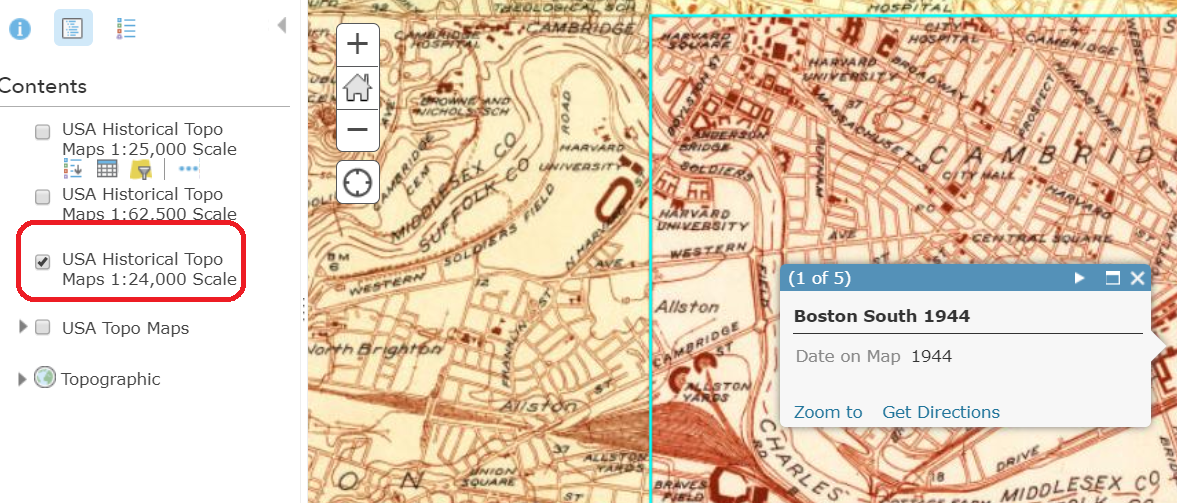- Home
- :
- All Communities
- :
- Industries
- :
- Imagery and Remote Sensing Insights (IRIS) COP
- :
- Imagery Questions
- :
- Easy way to remove collars from GeoTIFF of USGS To...
- Subscribe to RSS Feed
- Mark Topic as New
- Mark Topic as Read
- Float this Topic for Current User
- Bookmark
- Subscribe
- Mute
- Printer Friendly Page
Easy way to remove collars from GeoTIFF of USGS Topo?
- Mark as New
- Bookmark
- Subscribe
- Mute
- Subscribe to RSS Feed
- Permalink
- Report Inappropriate Content
I have downloaded a lot of GeoTiffs of historical topo maps from the USGS (https://ngmdb.usgs.gov/topoview) at the 1:24000 scale. I am wanting to Mosaic these together to eventually clip to watershed boundaries, however the white collars on the outside are proving to be a headache. I have not been able to find a solid answer on these forums or anywhere else on the internet of how exactly to remove the collars.
Does anyone have an answer?
Any help would be appreciated!
- Mark as New
- Bookmark
- Subscribe
- Mute
- Subscribe to RSS Feed
- Permalink
- Report Inappropriate Content
Curtis,
Thank you so much for this information, I found DRG (.sid) files for the whole state I am working with. Any idea of how to mosaic these together? I will post another thread in this forum asking the same question.
Thank you all so much for your help! xander_bakker as well even though I might not be using the Python Script you came up with I appreciate all your help as well
- Mark as New
- Bookmark
- Subscribe
- Mute
- Subscribe to RSS Feed
- Permalink
- Report Inappropriate Content
I would suggest not mosaicking them together (Mosaic To New Raster could do this in theory) but instead add them to a referenced Mosaic dataset so you can keep them in their zippy tiny compressed .sid format and yet display them seamlessly. Much more efficient way to deal with a large collection of rasters like that. Once they are loaded to a Mosaic Dataset you can clip out what you want (if you must) with the Clip_management tool.
- Mark as New
- Bookmark
- Subscribe
- Mute
- Subscribe to RSS Feed
- Permalink
- Report Inappropriate Content
You can't mosaic sid files together in ArcMap... if memory serves you need FME
- Mark as New
- Bookmark
- Subscribe
- Mute
- Subscribe to RSS Feed
- Permalink
- Report Inappropriate Content
Wow that would be a pain, so I guess you'd have to Copy Raster them to another format and then mosaic them. Another argument to leave them as they are in .sid and use a mosaic dataset to display them together on the fly.
- Mark as New
- Bookmark
- Subscribe
- Mute
- Subscribe to RSS Feed
- Permalink
- Report Inappropriate Content
Sean
have you looked at the historical USGS topo maps available as free services through ArcGIS Online? (ArcGIS Online subscription required)
http://www.arcgis.com/home/item.html?id=40109482569c4bcc873dfa7fec7c167e
There are tens of thousands of maps mosaicked and ready to use, at different scales and from different dates...

http://www.arcgis.com/home/item.html?id=40109482569c4bcc873dfa7fec7c167e
http://www.arcgis.com/home/item.html?id=be337c042cd4476e9ba29d4c0e26b5fb
many more


If you really need to create your own mosaic, I'd use a Mosaic Dataset, and define the seamline for each map using the extents of the map area (inside the "collar"), then mosaic method = seamlines will hide all the collars. This will be a dynamic mosaic, allowing you to expose the collar of any selected map if desired.
If you really need to output a new file, my first question is "Are you sure?", but you can export or cache the dynamic mosaic to persist a static image.
http://esriurl.com/ImageManagement --> look for the Scanned Maps workflow.
- Mark as New
- Bookmark
- Subscribe
- Mute
- Subscribe to RSS Feed
- Permalink
- Report Inappropriate Content
Cody, I tried the link to the historical maps database but it did not work, i tried to sign in and it told me that I was not a member of this organization. Is it possible to run raster analysis on these basemaps? (supervised classification?)
- Mark as New
- Bookmark
- Subscribe
- Mute
- Subscribe to RSS Feed
- Permalink
- Report Inappropriate Content
Sean
My apologies. When I inserted those links, I edited the visible text but didn't realize the hyperlinks were still going to an internal AGOL organization. Please try them again - they should be accessible to anyone with an ArcGIS Online account.
No, maps are not suitable input to classification. Image classification is intended for imagery, not the thematic representation you'd find in a map. I've never heard of anyone attempting it, but I'm confident you won't get results that make any sense.
Separate from the issue of mosaicking maps and removing the collars, or accessing image services, perhaps we can help you better if you explain your objectives, and ideas on how you're planning to approach the problem.
Cody B.
- Mark as New
- Bookmark
- Subscribe
- Mute
- Subscribe to RSS Feed
- Permalink
- Report Inappropriate Content
I see, I do not have an arcgis online subscription anyways.
My objectives are to somehow calculate the area of historical strip mining within individual watershed boundaries (I have shapefiles of watershed boundaries, and historical topo map files (DRG's). But this is proving to be quite difficult in every aspect. The DRG files I have downloaded are (.sid) files so I had to transform them into .tiff files to work with them. I'm currently trying to mosaic them together but this process has been running for 4 days now and I'm just really not sure if what I'm doing will work out.
My professor thinks I can clip the mosiac to each watershed boundary and then run a supervised classification on the clipped image to extract areas of strip mining and non-strip mining, then perform a raster to vector on that image to calculate the area of strip mining.
Any advice on how to achieve this goal would be greatly appreciated.
- Mark as New
- Bookmark
- Subscribe
- Mute
- Subscribe to RSS Feed
- Permalink
- Report Inappropriate Content
Seems like overkill, unless you are doing dozens of years. you have ruled out the obvious solution of digitizing the areas manually? Human-ware would easily skip the collars and remove the 'errers' associated with doing a classification. The eye is better than the machine in many cases and it least it would get you going forward and you can fill in the fuzzy process gaps later ![]()
- Mark as New
- Bookmark
- Subscribe
- Mute
- Subscribe to RSS Feed
- Permalink
- Report Inappropriate Content
I have not ruled it out, was just hoping to automate the process given that I have 67 individual watersheds I need to do this for. I guess I can go with digitizing to get started. If I union the digitized polygons with the watershed boundary would this allow me to calculate the percentage of area within the watershed covered by mining?